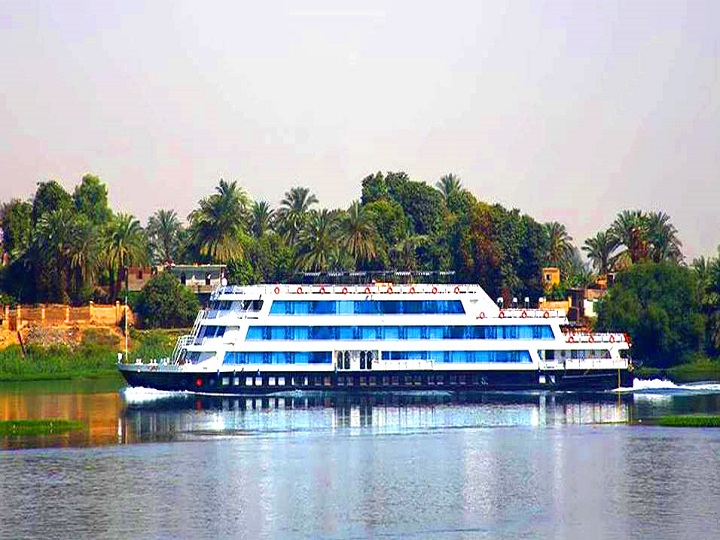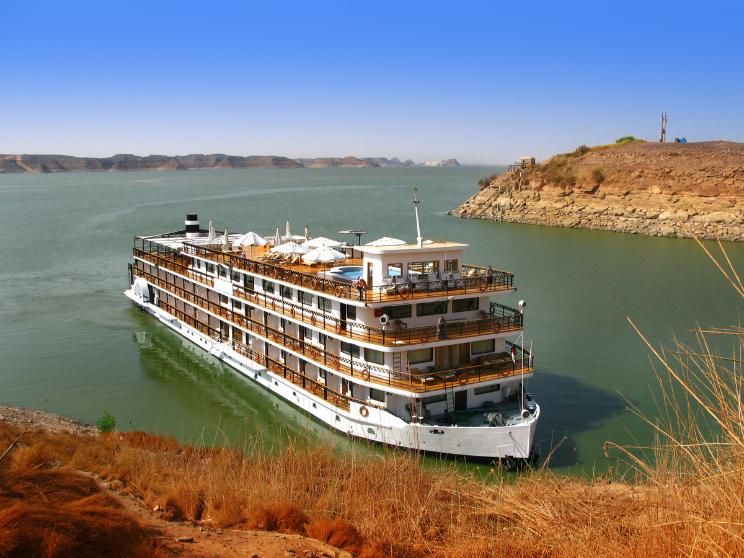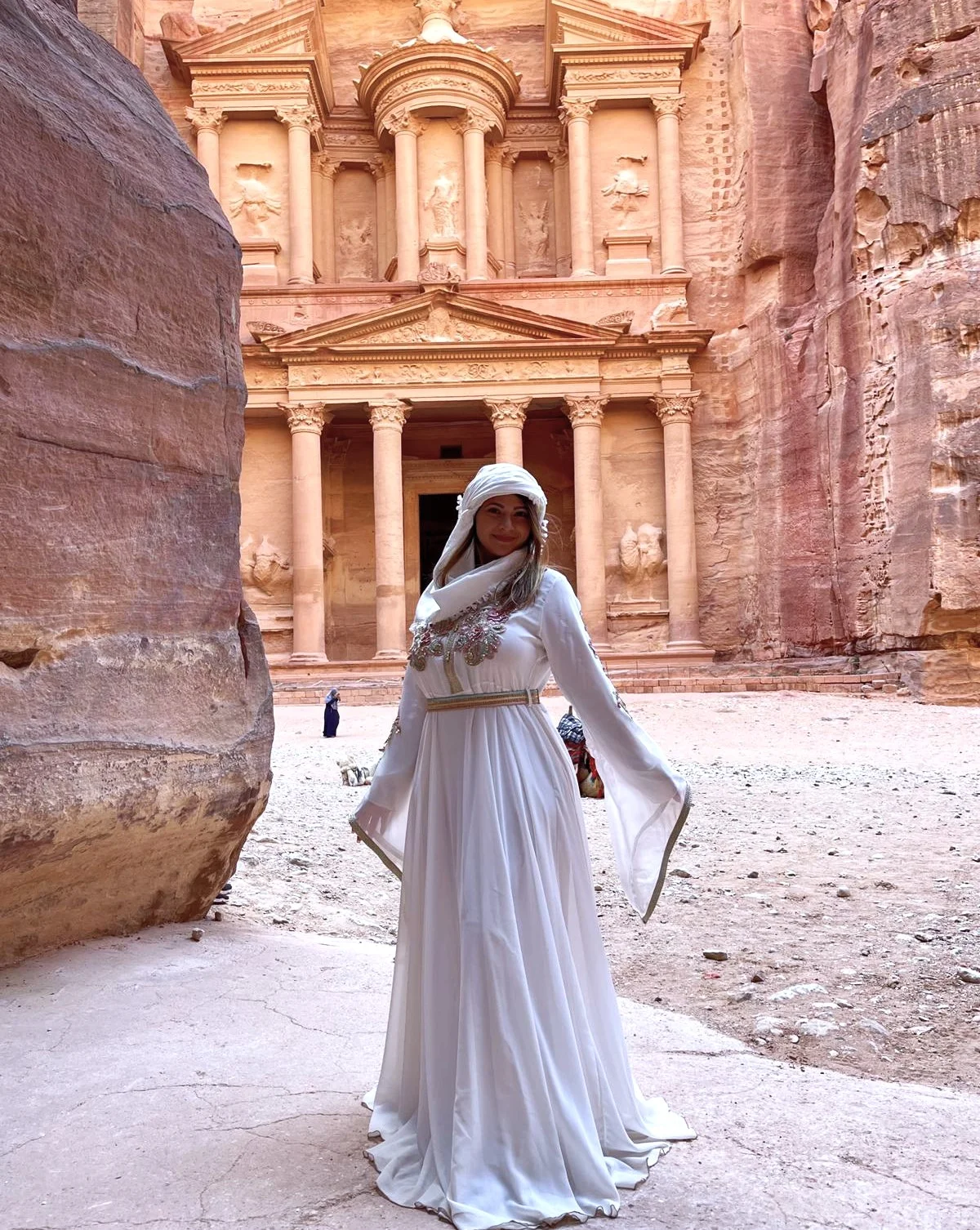This website uses cookies so that we can provide you with the best user experience possible. Cookie information is stored in your browser and performs functions such as recognising you when you return to our website and helping our team to understand which sections of the website you find most interesting and useful.

By admin on 22 Mar 2025
With its awe-inspiring pyramids, ancient temples, and vibrant culture, Egypt invites adventure seekers and history buffs alike to uncover its timeless treasures. But when is the best time to visit this enchanting land? Imagine wandering through the bustling markets of Cairo or exploring the majestic Nile on board a luxury Nile Cruise ship under the golden sun—your experiences can vary dramatically depending on the season. In this guide, we’ll unveil the secrets to planning your trip to Egypt. From the ideal weather for a desert trek to the most captivating festivals that breathe life into its historic streets, we’ll arm you with the insights needed to make your Egyptian journey truly magical. Get ready to dive into the adventure;

Tour around Saqqara Necropolis
Peak Tourist Seasons: When to Experience Egypt’s Crowds
The peak tourist season in Egypt typically spans from October to April. During this time, the weather is comfortably mild, making it an ideal period for outdoor exploration. The cooler temperatures are particularly inviting for visiting Egypt’s iconic sites such as the Great Pyramids of Giza, the Valley of the Kings, and the sprawling temples of Luxor. While the pleasant weather is a significant draw, it also means that popular attractions can be bustling with visitors. If you thrive in a lively atmosphere, this is the perfect time to immerse yourself in the vibrant energy that fills the streets and historical landmarks.
However, with the influx of tourists comes the challenge of navigating crowded sites. Patience becomes a virtue as you may find yourself waiting in line to catch a glimpse of the Sphinx or jostling for the best view of the hieroglyphs within the temples. Despite the crowds, the peak season offers a fantastic opportunity to participate in guided tours, which are plentiful during this time. Expert guides provide deep insights into the history and significance of each site, enriching your travel experience and deepening your connection to Egypt’s ancient civilization.
Accommodations and flights are in high demand during the peak season, so it’s advisable to book well in advance. Prices for hotels and tours can be significantly higher compared to other times of the year, but the advantage of experiencing Egypt in its most tourist-friendly weather can outweigh the costs. If you prefer a structured itinerary with plenty of guided options and don’t mind sharing the experience with fellow travelers, the peak tourist season is an excellent choice for your Egyptian adventure.
Off-Peak Travel: Benefits of Visiting Egypt During Low Season
Traveling to Egypt during the off-peak season, which generally falls between May and September, provides a different kind of adventure. The scorching summer temperatures, often reaching over 100 degrees Fahrenheit, deter many tourists, resulting in quieter attractions and lower prices. If you can withstand the heat, visiting during this time offers the unique benefit of exploring Egypt’s wonders without the crowds. Imagine having the Pyramids of Giza almost to yourself or wandering through the ancient streets of Cairo without the hustle and bustle of peak-season tourists.
One of the significant advantages of off-peak travel is the cost savings. Flights and accommodation prices drop considerably, making it an attractive option for budget-conscious travelers. Many hotels and tour operators offer substantial discounts to entice visitors during the hot summer months. This can allow you to experience luxury accommodations and exclusive tours that might be out of reach during the peak season. Additionally, the quieter atmosphere means you can engage more personally with local guides and vendors, often resulting in a more intimate and enriching travel experience.
Despite the heat, there are ways to enjoy Egypt during the off-peak season. Early morning and late afternoon excursions can help you avoid the midday sun. Many historical sites open early, allowing you to explore before the temperatures become unbearable. Indoor attractions, such as museums and markets, offer a respite from the heat and are typically less crowded. With proper planning and a willingness to adapt to the climate, visiting Egypt during the low season can be a rewarding and memorable experience.

Excursions around Hurghada
Best Months for Mild Weather and Optimal Sightseeing
For those seeking the best weather conditions for exploring Egypt, the months of October to April are ideal. During this period, the temperatures are mild, ranging from the mid-60s to low 80s Fahrenheit, providing a comfortable climate for sightseeing. The cooler weather is perfect for visiting outdoor attractions, such as the magnificent temples of Abu Simbel, the serene banks of the Nile, and the bustling markets of Cairo.
October and November are particularly pleasant months to visit, as the summer heat begins to wane, and the tourist crowds have not yet reached their peak. This shoulder season offers a balance of favorable weather and fewer visitors, allowing you to enjoy Egypt’s landmarks without the congestion. Similarly, March and April provide a sweet spot of mild temperatures and manageable crowds, making it an excellent time for both cultural exploration and outdoor activities.
While the winter months of December to February are cooler, with temperatures occasionally dipping into the 50s Fahrenheit, they are still mild compared to many other destinations. This period is perfect for travelers who prefer cooler weather and don’t mind wearing a light jacket in the evenings. The winter sun is gentle, making daytime excursions pleasant and comfortable. Whether you’re cruising down the Nile or exploring the ancient ruins of Thebes, the mild winter weather ensures an enjoyable and memorable experience.

Festivals and Events: Timing Your Visit for Cultural Experiences
- Egypt is not only rich in history but also in cultural celebrations and festivals that bring its vibrant traditions to life. Timing your visit to coincide with these events can add an extra layer of excitement and authenticity to your trip. One of the most significant festivals is Ramadan, the Islamic holy month of fasting.
- Another captivating event is the Abu Simbel Sun Festival, which takes place twice a year on February 22 and October 22. This ancient celebration dates back to the reign of Pharaoh Ramses II, who designed the temple of Abu Simbel so that the inner sanctuary would be illuminated by the sun’s rays on these specific dates. Witnessing this incredible phenomenon, where the statues of Ramses and the gods are bathed in sunlight, is a once-in-a-lifetime experience. The festival also includes traditional music and dance performances, adding to the magical atmosphere of the event.
- The Cairo International Film Festival, held in November, is another highlight for culture enthusiasts.
Exploring Egypt’s Attractions: Seasonal Highlights
- Each season in Egypt offers unique highlights and opportunities to explore its diverse attractions. During the cooler months of October to April, the pleasant weather is perfect for outdoor activities and exploring Egypt’s historical sites. The Pyramids of Giza, the Sphinx, and the temples of Luxor and Karnak are particularly enjoyable to visit during this time, as the mild temperatures make it comfortable to spend extended periods outdoors. The Nile River Cruise is also popular during these months, offering a relaxing way to experience the scenic beauty and historical landmarks along the river.
- Spring, from March to May, brings blooming flowers and lush landscapes to the Nile Valley and the oases in the Western Desert. This is an excellent time for nature enthusiasts to explore the verdant fields and gardens that come to life after the winter rains. The cooler temperatures also make it an ideal season for desert excursions, such as visiting the White Desert and the Black Desert, where you can marvel at the unique rock formations and enjoy stargazing under the clear desert skies.
- Summer, from June to August, maybe hot, but it offers the advantage of fewer crowds and lower prices. Coastal destinations like the Red Sea and the Mediterranean north coasts are perfect for summer visits, as the sea breezes and water activities provide a refreshing escape from the heat. Snorkeling and diving in the Red Sea are particularly popular, with vibrant coral reefs and abundant marine life creating an underwater paradise. Exploring the coastal cities of Alexandria and Hurghada can also be a delightful experience, with their rich history and beautiful beaches.
- Autumn, from September to November, brings a gradual cooling of temperatures, making it a pleasant time for both cultural and outdoor activities. The harvest season in the Nile Delta is a vibrant time, with local markets brimming with fresh produce and traditional foods. This is also a great time to explore the ancient agricultural traditions that have sustained Egyptian civilization for millennia.
Whether you’re visiting the bustling streets of Cairo, the serene temples of Aswan, or the tranquil oases of Siwa, each season in Egypt offers its unique charm and opportunities for unforgettable adventures.

Budget Considerations: Costs Associated with Different Seasons
When planning a trip to Egypt, it’s essential to consider how the time of year can impact your travel budget. During the peak tourist season, from October to April, prices for flights, accommodations, and tours are at their highest. The increased demand means that hotels and airlines can charge premium rates, and popular tours may sell out quickly. To manage costs during this time, it’s advisable to book well in advance and look for package deals that can offer savings on bundled services.
In contrast, traveling during the off-peak season, from May to September, can result in significant cost savings. With fewer tourists visiting Egypt during the hot summer months, many hotels and tour operators offer discounts and special promotions to attract visitors. Flights are also generally cheaper, making it an ideal time for budget-conscious travelers. By planning your trip during this period, you can enjoy luxury accommodations and exclusive tours at a fraction of the peak season prices. Additionally, the lower cost of living in Egypt means that your money can go further, allowing you to experience more for less.
Seasonal Travel Guide: Packing and Preparation
A well-prepared traveler can make the most of their journey to Egypt, ensuring a smooth and enjoyable experience. The country’s climate varies throughout the year, so understanding what to expect in each season will help you pack appropriately.
- During the peak travel months from October to April, the weather is pleasantly mild. Light, breathable clothing is best for daytime excursions, while a light sweater or jacket is useful for cooler evenings. Comfortable footwear is essential, as visiting historic sites often requires extensive walking. Sun protection—such as a hat, sunglasses, and sunscreen—is crucial for outdoor activities. Bringing a reusable water bottle will help you stay hydrated, especially in arid regions or on long tours.
- If you’re visiting between May and September, prepare for intense heat. Wearing loose, light-colored clothing made from natural fabrics like cotton or linen can help keep you cool. A high-SPF sunscreen, a wide-brimmed hat, and sunglasses are must-haves for sun protection. Since dehydration is a concern in the summer, carrying sufficient water and electrolyte supplements can be beneficial. For beachgoers, packing swimwear, water shoes, and a rash guard will ensure comfort while enjoying the Red Sea’s waters. Plan outdoor activities for early morning or late afternoon to avoid the midday heat.
- Spring and autumn (March-May and September–November) bring transitional weather, with temperatures fluctuating between warm and mild. Layered clothing works best to adapt to changing conditions throughout the day. A light jacket or shawl may come in handy for cooler mornings and evenings. Comfortable walking shoes and sun protection remain important, as exploration often involves both urban and rural environments.
- In addition to weather-related packing, it’s essential to be mindful of cultural norms. As Egypt is a predominantly Muslim country, modest attire is recommended, particularly when visiting religious sites. Women should cover their shoulders and knees.
Conclusion
History and culture lovers will find the cooler months best suited for exploring Egypt’s ancient landmarks. With milder temperatures, visiting sites like the Pyramids of Giza, the temples of Luxor and Karnak, and the tombs in the Valley of the Kings is far more comfortable. A Nile cruise is another exceptional way to immerse yourself in Egypt’s history, allowing you to journey through the country’s past while enjoying the pleasant climate. No matter your interests, Egypt provides an array of seasonal adventures catering to every traveler.
Categories
- Egypt and Jordan Tours (12)
- Egypt Destinations (23)
- Egypt Nile Cruises (38)
- Egypt Sightseeing (14)
- Egypt Tour Packages (17)
- infographics (1)
-

Nile Cruisers Reviews
25 Mar 2025
-

Nile Cruise from Cairo to Aswan
06 Dec 2025
-

How Can I Use Nile Cruisers to Book a Nile Cruise Package Between Luxor and Aswan?
29 Nov 2025
-

Thanksgiving Deals: Limited-Time Egypt and Jordan Tour Packages for the Season
20 Nov 2025
-

Spend The 2025 Thanksgiving Sailing the Nile: Book Your Nile Riverboat Adventure This Holiday Season
20 Nov 2025
-

VIP Egypt and Jordan Tours: Travel in Comfort and Style
13 Oct 2025
-

Smart Travel on the Nile: Tech Tips for a Smooth Dahabiya Journey
13 Oct 2025
-

Nile Cruisers Reviews
25 Mar 2025
-

Nile Cruise from Cairo to Aswan
06 Dec 2025
-

How Can I Use Nile Cruisers to Book a Nile Cruise Package Between Luxor and Aswan?
29 Nov 2025
-

Thanksgiving Deals: Limited-Time Egypt and Jordan Tour Packages for the Season
20 Nov 2025
-

Spend The 2025 Thanksgiving Sailing the Nile: Book Your Nile Riverboat Adventure This Holiday Season
20 Nov 2025












Comments